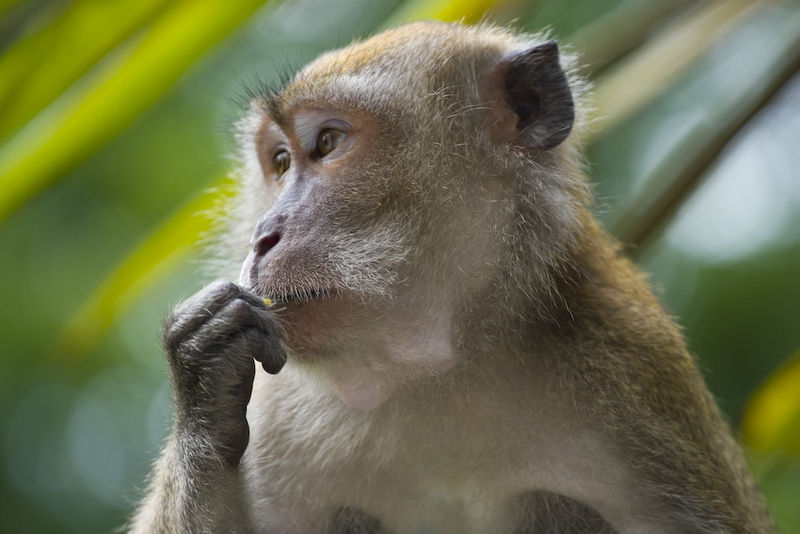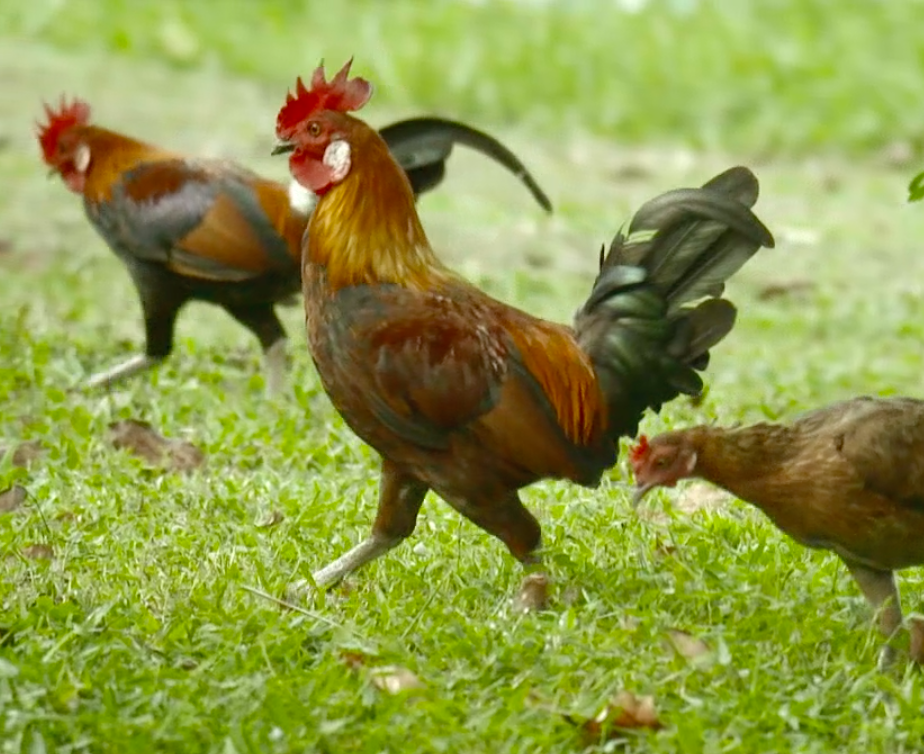In case you haven't been reading the news recently, Singapore has been in the grips of a chicken-culling saga.
Here's a quick recap:
- On Feb 1., the Agri-Food and Veterinary Authority of Singapore (AVA) disclosed that 24 chickens at Sin Ming road have been put down.
- The reason: AVA received "about 20" complaints from residents about them being a source of noise.
- AVA also voiced concerns that free-roaming chickens may spread bird flu.
- And the National Parks Board (NParks, for short) are keen to do the same, but their reason is they're more concerned with of chickens crossbreeding with red junglefowl, our native breed.
And here's where we start to look for people who make sense to join the public debate, confusion and outrage over the wanton killing of these chickens, whose year is even being celebrated (there's got to be something pantang about that).
Enter public intellectual and economist Donald Low, who gives us three reasons why the culling of the Sin Ming Chickens is troubling:
1) The AVA arrived at its decision as a result of complaints
It very much seems like the AVA based their decision solely on the complaints alone, he says.
The culling, he notes, is then the result of a dissatisfied few, rather than the general consensus of the residents as a whole.
"In any society, there is always a small percentage of people who have an irrational dislike or fear of animals. Pandering to the few, while ignoring the preferences of those who are tolerant of animals, is policy-making driven by the complaints of a few. This is the definition of capture."
What's even more unfortunate, he adds, is that this isn't even the first time culling has happened as a result of complaints.
In 2013, complaints regarding stray dogs at Bukit Batok Street 24 pushed authorities from the Agri-Food and Veterinary Authority of Singapore to begin preparations to trap them.
This was problematic as a survey showed that most residents were against culling — and in fact, all this was happening as a result of persistent complaints coming from a resident.
[caption id="" align="aligncenter" width="524"] Photo via[/caption]
Photo via[/caption]
In that same year, the culling of macaques had also risen sharply, also in response to complaints by residents.
Around 1/5 of the population was culled in the first half of 2013, which is shocking as the population of the macaques at that point of time did not number more than 2,000.
Animal lovers and volunteers have since attempted to persuade authorities to rethink culling the animals.
 Photo via
Photo via
2) Even if more people complained, that does not make the decision to cull them necessarily the right one
Perhaps what can be done instead, Low argues, is to find out if there is a more legitimate basis to the complaints, find a solution and debunk myths and misconceptions, if possible.
For example, if there is a concern that these chickens may be carrying bird flu, more research can be done to either confirm or debunk the fear.
If there is no actual risk, Low adds, residents can be educated that their worries are misplaced.
It's not as straightforward as culling the birds, but it could provide a chance for Singaporeans to gain awareness and be educated on the situation, he says.
"In land-scarce Singapore, it is terribly important that Singaporeans learn to live with the inconveniences that are sometimes caused by nature and the (shrinking population of) animals in their midst. Unless these are pests that pose a real harm to public health, mass culling is an extremely myopic response."
Low also adds that the recent events should provide sufficient foreboding to what could happen with the up-and-coming Eco-Lodge hotel at Mandai, which will be located next to the area in Singapore with the highest concentration of animals:
"AVA's decision to cull the chickens simply because of a few complaints does not bode well for WRS' plan, and should cause all Singaporeans deep concern about how the authorities would deal with the noise and irritation caused by animals that the hotel guests would, almost inevitably, complain about. I leave you to ponder the likely scenarios when a full-service hotel with the same number of rooms as the Marriott or Sheraton is built next to an area with the highest concentration of animals in Singapore."
3) These increasing incidents of culling could suggest the rise of populism.
Populism is a big word, but the concept does, literally, concern the everyday people.
The AVA's act of culling chickens in direct response to complaints from a small minority is, Low argues, a clear representation of populism in action — in other words, pandering to irrational concerns (such as noise and bird flu), denying scientific proof to the contrary and exaggerating the few examples of harm or risk posed by whatever is in contention.
"In our particular version of populism, AVA says that stray chickens might be carriers of bird flu. Sure, such risks may exist, but how serious are they? Are they serious enough to justify mass culling? If the mere existence of such a risk, no matter how slight, is grounds for culling, why distinguish between domesticated chickens and the red jungle fowl? You mean thee fact that the red jungle fowl is classified as an endangered species stops it from being a public health risk? The point is not that we should treat the two species alike; it is simply to highlight the internal contradictions in a policy that is driven not by a careful analysis of risks, but by knee-jerk populism."
In conclusion:
"The road to populism starts with ignorance and inertia on the part of citizens. We should ask to see much stronger evidence of the real harms caused by stray chickens in our island before we acquiesce to AVA's mass culling.
And while we're at it, let's start by not axing this happy family at Kang Choo Bin Walk.
TL;DR let's not jump straight into culling the birds, but rather properly analyse the situation to see if better alternatives can be considered. TYVM.
We can't embed Low's Facebook post, but you can read it here, or read our screenshot of it here:
 Screenshot from Donald Low's Facebook post
Screenshot from Donald Low's Facebook post
Top image via
If you like what you read, follow us on Facebook and Twitter to get the latest updates.
If you like what you read, follow us on Facebook, Instagram, Twitter and Telegram to get the latest updates.
